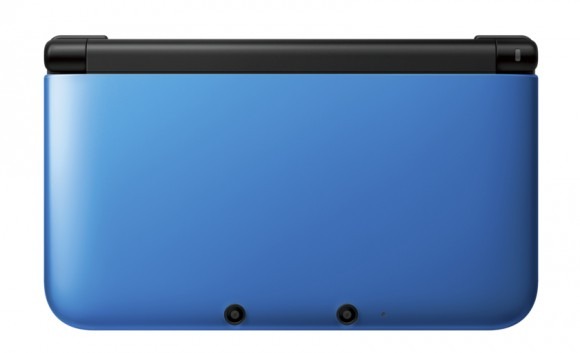SlashGear 101: Nintendo 3DS XL Vs Nintendo 3DS
Nintendo is hoping to cash in on rising interest in the 3DS with a new, larger version of the console, the freshly-announced Nintendo 3DS XL. The XL variant – sold as the LL in Japan – super-sizes both of the handheld's displays and makes a few more tweaks along the way, but is bigger really better? Read on for all the comparison details you need.
A bigger 3DS? What makes it so "XL"?
It's all about screen size. Nintendo's regular 3DS has a 3.53-inch top display and a 3.02-inch lower display, which the XL model enlarges to 4.88- and 4.18-inches respectively. That means a bigger casing to suit, with the 3DS XL measuring 6.1 x 3.7 x 0.87 inches versus the 5.3 x 2.9 x 0.83 inches of the 3DS.
Nintendo has a track record for making larger versions of its handhelds. The last-gen DSi spawned an LL/XL follow-up of its own, keeping the same clamshell aesthetic but boosting the size of the display. Nintendo's target audience back then was adults and older users who might want the mobile gameplay convenience of a portable but find the regular DSi too squint-inducing.
This time around, Nintendo isn't pointing directly at the elderly. Instead, it's pitting the 3DS XL at anyone who wants "more real estate" for their gameplay, as well as for those who use the console for Netflx and Nintendo Video streaming. Of course, it also means you'll get a more impressive glasses-free 3D experience.
Glasses-free 3D? How does that work?
Most people are familiar with 3D based on special glasses – whether they're the flimsy pair you pick up in the foyer at the movie house, a more expensive active-shutter set for home use, or even the old fashioned red/blue-lensed cardboard pair – but the 3DS XL uses a different technology called autostereoscopics. A special lens on top of the upper screen, called a parallax barrier, basically splits the picture between the two eyes, allowing the 3DS XL to show each eye something slightly different.
A control on the side of the display adjusts the 3D effect to suit the viewer, and if you want you can switch it off altogether and use it in 2D mode instead.

Is it really better than the 3DS?
That's a tricky one. Although the screens are larger – the top panel being slightly bigger than the display on the Samsung Galaxy S III, albeit in landscape orientation – the resolution of each hasn't been increased over the regular 3DS. So, the upper still runs at 800 x 240 (though it's effectively 400 x 240 per eye, since each eye only sees half of the pixel columns), and the lower runs at 320 x 240.
Although it ought to ensure broad game compatibility with existing 3DS titles, it does mean that 3DS XL gamers aren't getting any more detail from the new model: they just see things bigger. If you have problems seeing regular 3DS games then that magnification might be everything you need for comfort, but if you were hoping for a more graphically-competitive challenge to Sony's PS Vita then you'll be disappointed.
Sadly Nintendo hasn't used the extra chassis size to add in a second analog pad, and since the 3DS XL is bigger than the regular version, it probably won't fit into the Circular Pro Pad accessory already on sale in some locations. Still, Nintendo does increase the standard size of SD card buyers get, bundling a 4GB rather than 2GB chip. Those in Japan or Europe won't get an AC adapter bundled with the 3DS LL, though those in North America will.
Although the screens are larger and more power-hungry, that also means more space for a bigger battery. So, the 3DS XL is rated for between 3.5 and 6.5 hours of native 3DS games, or 6 to 10 hours of DS games. In contrast, the regular 3DS lasts 3 to 5 hours of native titles or 5 to 9 hours of DS titles.
Okay, so when can I get one?
If you're in Japan or Europe you'll be able to pick up the 3DS LL/XL first. The new handheld goes on sale on July 28, priced at ¥18,900 in Japan. That will be followed by North American availability on August 19, priced at $199.99.
